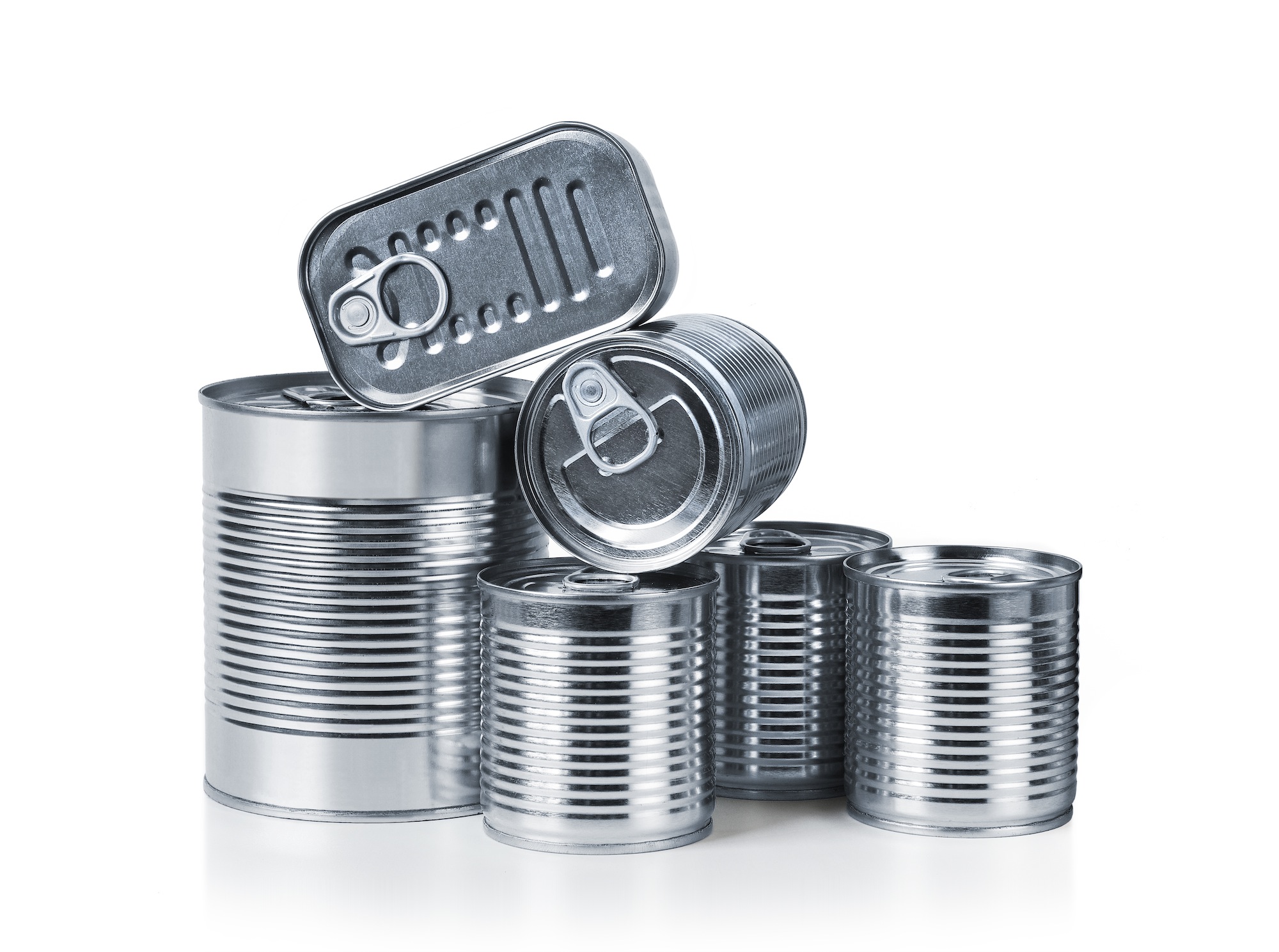Bisphenol A (BPA) is a chemical found in food packaging like the epoxy resin that lines cans, and in plastic water bottles and food containers, as well as thermal paper receipts and recycled paper products. BPA is a hormone disruptor, as it is able to bind to the estrogen receptor mimicking the action of estrogen.
Higher BPA levels in the urine have been associated with greater risk for polycystic ovarian syndrome (PCOS) in women (1) as well as higher breast density, a risk factor for breast cancer (2). Higher levels of BPA in the urine have also been associated with obesity in children and adults (3-4). While the cause-effect relationship still remains unclear for obesity, your best bet is to limit your exposure as much as possible, especially during particularly sensitive developmental periods like pregnancy, infancy, and childhood.
Luckily, BPA has been phased out of many products and has been banned by the FDA from use in baby bottles and sippy cups designed for children. Manufacturers has voluntarily based BPA out of some water bottles, can linings, and receipts.
All of that sounds great, but the problem remains that the chemicals that replace BPA may be just as harmful as BPA. For example, Bisphenol S is a BPA replacement currently being used, and it is also a hormone disruptor. Because of these concerns, it’s wise to limit your exposure to plastics and canned foods as much as possible regardless of whether or not a product is listed as “BPA-free (5).”
Strategies to Steer Clear of BPA and its Replacements
1. Receipts: Don’t take a receipt at all when that makes sense. Some major retailers like Office Depot and Walgreens will simply email you a receipt. It saves paper and allows you to avoiding touching the BPA-containing receipt. When you do take a receipt, ask for it to be put in the bag instead of in your wallet. Wash your hands immediately after handling receipts. The BPA in thermal paper receipts is able to enter your bloodstream through the skin. This was discovered in a study of pregnant women looking at their BPA exposures. Cashiers were noted to have the highest BPA levels (6).
2. Canned Foods and Beverages: This includes not only items like canned beans, tomatoes, and vegetables, but also soda and beer in cans. You really want to avoid drinking soda anyway, because excess sugar is linked to many health problems (like metabolic syndrome, diabetes, and heart disease). For beer or other beverages like sparkling flavored waters, get the varieties in glass bottles instead of cans.
There are tomatoes and beans in BPA-free cans now, though I’m not convinced that the BPA replacements are safe. Instead you can buy tomatoes in tetrapak cartons or in glass jars. Try cooking beans from dry – you can always cook them ahead of time and freeze. Beans are also now available in Tetrapak or BPA-free pouches from Pacific Foods and Fig Foods.
The presence of BPA in the packaging of canned fish is something I find particularly frustrating since most people would benefit from eating more fish and items like canned sardines and wild salmon require little preparation making them a great choice for boosting seafood intake. Wild Planet, Vitalchoice, and Crown Prince Naturals have some products that are in BPA-free packaging and are labeled as such. You can find these products online, at natural foods grocery stores, or in the natural foods section of some of some major grocery stores chains. Some of these products are in BPA-free cans where there may be concerns about BPA-replacements, while others are in pouches, which are probably a safer option. Trader Joe’s also has some fish in BPA-free cans or tins, but it’s not labeled as such, and customer service has not yet responded to my inquiry regarding BPA replacements.
3. Plastic water bottles and cups: While many water bottles are now BPA-free, there still may be questionable components in the plastic. Buying a stainless steel water bottle or drinking out of glasses or ceramic cups are your best bet.
4. Food storage containers: Buy glass food storage containers or use glass jars or ceramic containers for storing food. You should never heat up food in plastic or transfer hot food into a plastic container. The higher temperature increases the likelihood of leaching from the plastic.
References
1. Takeuchi T. Tsutsumi O, Ikezuki Y, Takai Y, Taketani Y. Positive Relationship Between Androgen and the Endocrine Disruptor, Bisphenol A, in Normal Women and Women with Ovarian Dysfunction. Endocrine Journal. 2004;51(2):165-169.
2. Sprague BL, Trentham-Dietz A, Hedman CJ, et al. Circulating serum xenoestrogens and mammographic breast density. Breast Cancer Research. 2013;15:R45.
3. Bhandari R, Xiao J, Shankar A. Urinary Bisphenol A and Obesity in US Children. American Journal of Epidemiology. 2013;177(11):1263-1270.
4. Wang T, Li M, Chen B, et al. Urinary bisphenol A (BPA) concentration associates with obesity and insulin resistance. J Clin Endocrinol Metab. 2012;97(2):E223-7.
5. Tell the EPA: Stop the toxic chemicals that have replaced BPA: Environmental Working Group. Available at: http://act.credoaction.com/sign/even_worse_than_bpa?sp_ref=36196115.4.6823.f.24381.2&referring_akid=.7819031.ny5Zri&source=fb_share_sp. Accessed: April 9, 2014.
6. Braun JM, Kalkbrenner AE, Calafat AM, et al. Variability and predictors of urinary bisphenol A concentrations during pregnancy. Environ Health Perspect. 2011;119(1):131-137.

1 Response to "Bisphenol A: Health Risks and How to Avoid it"
[…] ½ cups canned tomatoes (preferably in glass jars or tetrapak to avoid BPA) ½ medium onion, coarsely chopped 2 cloves garlic ½ cup apple cider vinegar 2 tablespoons […]